
Perennial Forbs Around Las Vegas, Vegetation Around Las Vegas
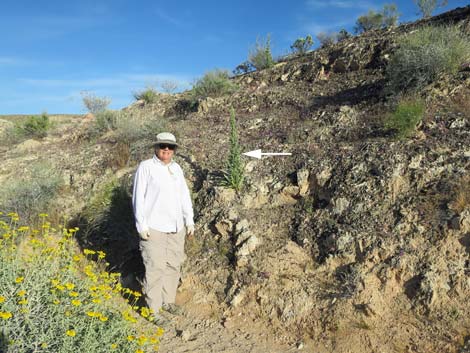 Blooming Palmer's Phacelia in typical habitat: gypsum soils |
General: Palmer's Phacelia (Phacelia palmeri) is a rare plant found only on gypsum-rich soils, although on these soils, it can be locally common. The plant grows from a basal rosette of relatively long, feather-shaped leaves with crinkled edges. As the plant ages, it develops a stem, with a tuft of living leaves only atop the stem. In bloom, the plant develops a long, branching, but upright flower stalk resembling a Christmas tree to 3-ft tall. The flowers are purplish-white. Palmer's Phacelia often is a dominant component of vegetation communities on gypsum-rich soils in the Upper Sonoran (Mojave Desert Scrub) life zone. Gypsum-rich soils, however, are rare in the Mojave Desert, so while this plant can be common where found, it is found in few places, and therefore is considered a rare plant. Family: Waterleaf (Hydrophyllaceae). |
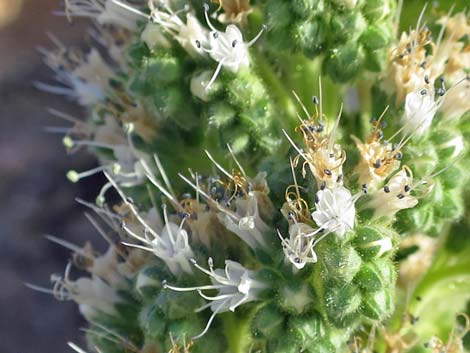 |
Other Names: Palmer's scorpionweed. Plant Form: Perennial forb growing as a basal rosette or as an erect stem with a tuft of living leaves atop the stem. Height: Basal rosette: about 2 inches; Erect stem wit leaves atop to about 12 inches; flowering stalk 2- 3-ft tall. Stems: Woody, with dead leaves attached. Leaves: simple, edges curled under, edges with slight lobes; to about 5 inches long. Flowers: Inflorescence: cyme. Corolla bell-shaped, 5 fused sepals, 5 petals, purple to white. NOTE: Bristly hairs may cause severe dermatitis. Seeds: Fruit: capsule. |
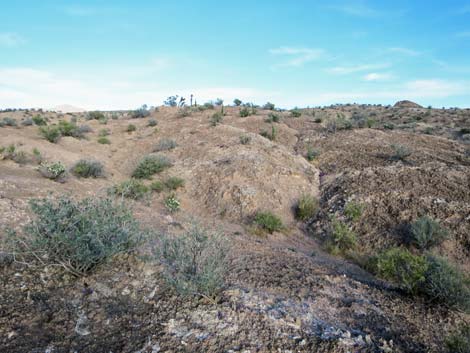 Typical habitat |
Habitat: Gypsum-rich soils. Elevation: 2,000 to 3,000 feet. Distribution: Southern Nevada, southeastern Utah, and northwestern Arizona. Around Las Vegas, look for this species along Northshore Road in Lake Mead NRA and out is Gold Butte NM along the unpaved section of Gold Butte Road. Comments: This unusual plant is often found in association with other gypsum-soil plants including California (Las Vegas) Bearpoppy, Silverleaf Sunray, and Parry’s Sandpaper Bush. |
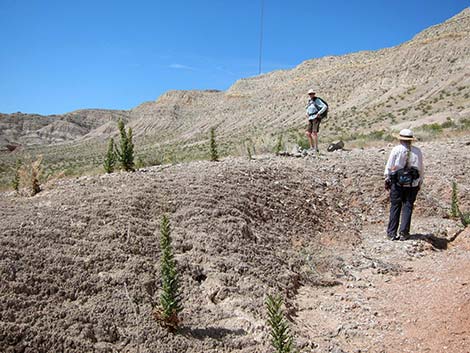 |
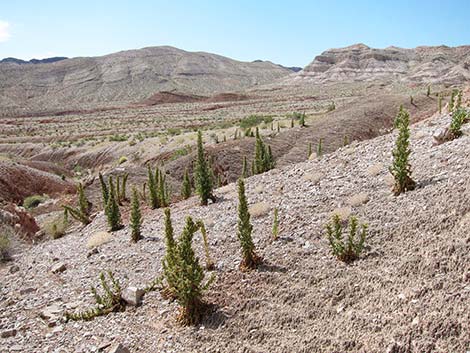 |
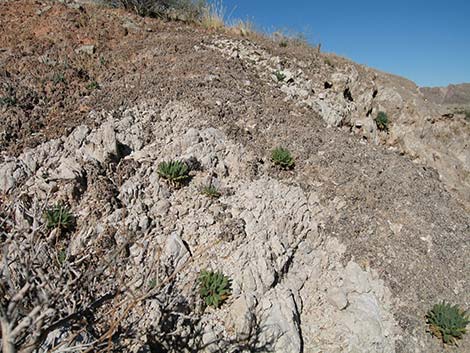 |
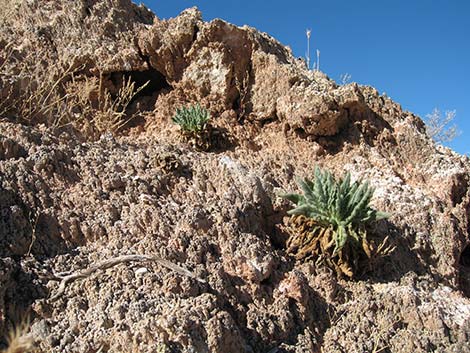 |
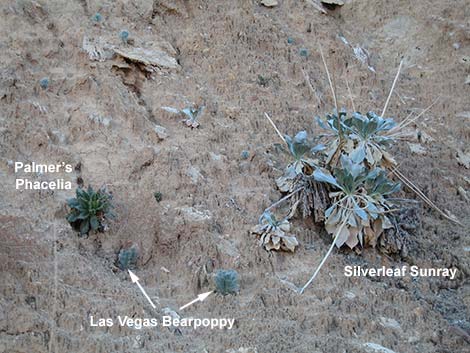 Typical associates |
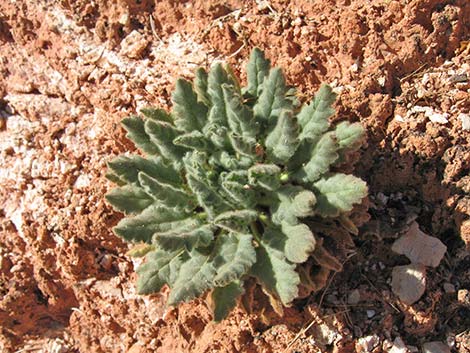 Palmer's Phacelia persist as basal rosettes |
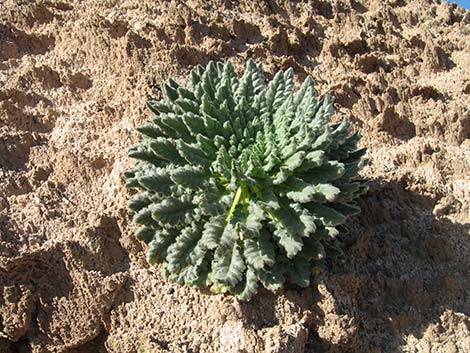 Basal rosette |
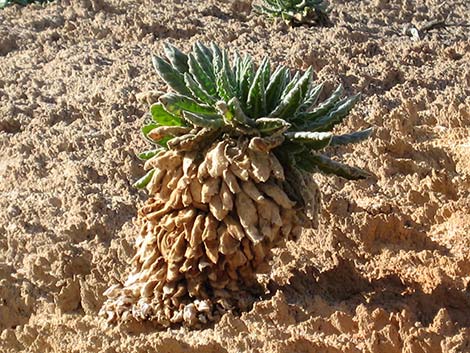 Plants grow into stalks over the years |
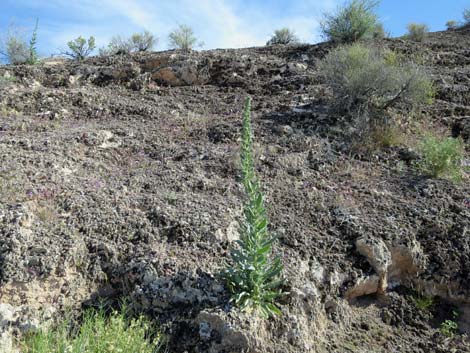 Palmer's Phacelia putting up a flowering stalk |
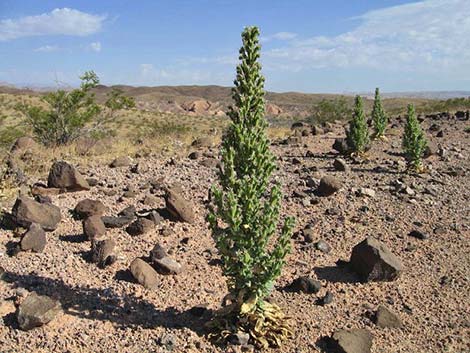 Palmer's Phacelia with a full flowering stalk |
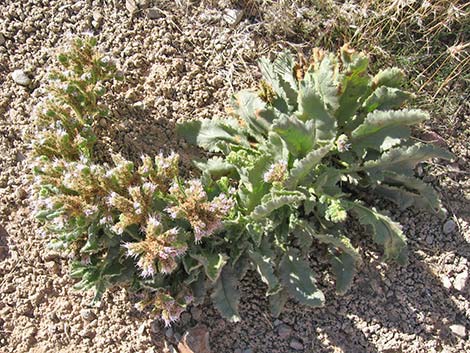 Dense clusters of purple flowers |
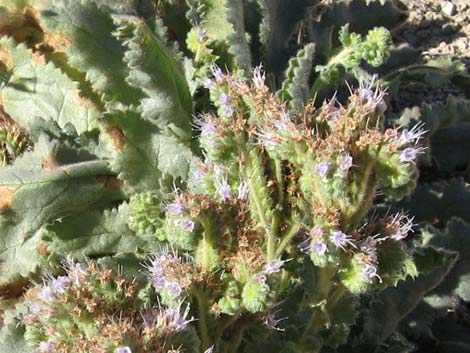 Dense clusters of purple flowers |
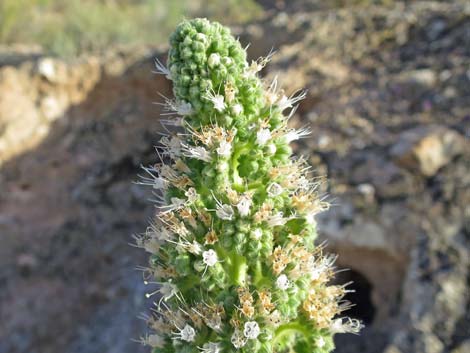 |
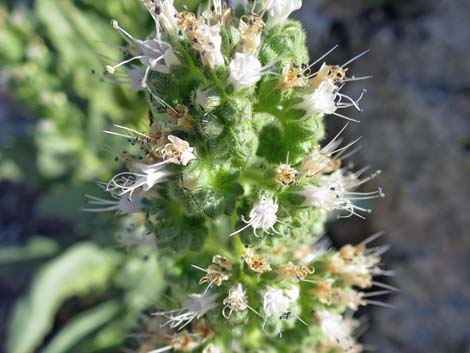 |
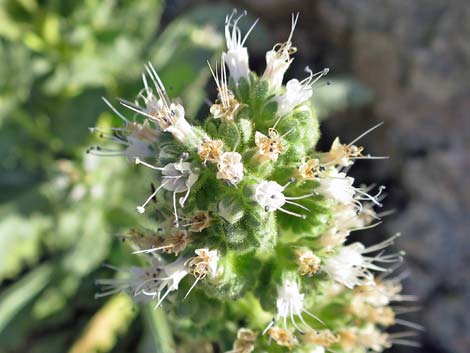 |
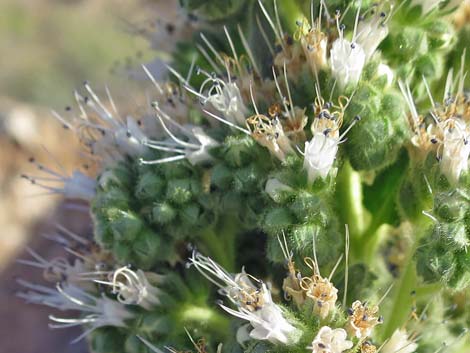 |
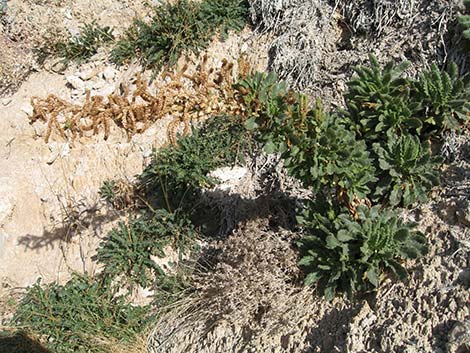 Palmer's Phacelia with a spent flowering stalk |
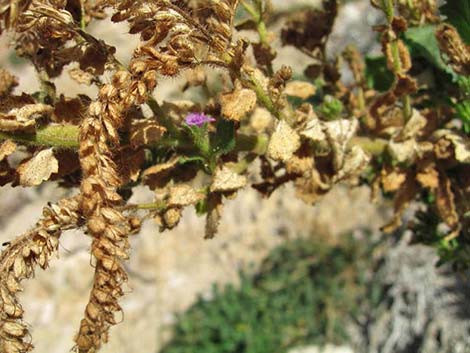 Spent flowers (plus one open flower) |
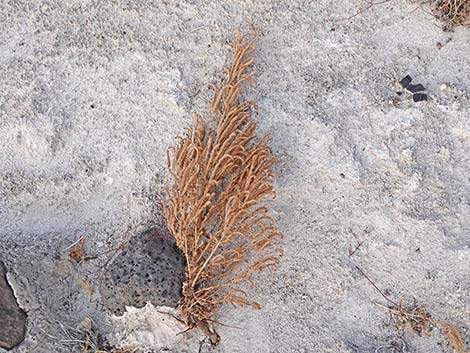 Dried plant during summer |
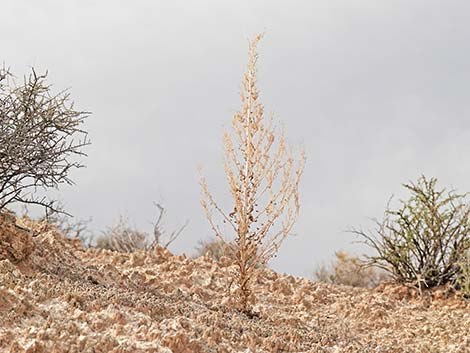 Dried plant during winter |
Note: All distances, elevations, and other facts are approximate. Names generally follow the USDA database.
![]() ; Last updated 220727
; Last updated 220727
| All Perennial Forbs | Plant Species Index | Glossary | Copyright, Conditions, Disclaimer | Home |